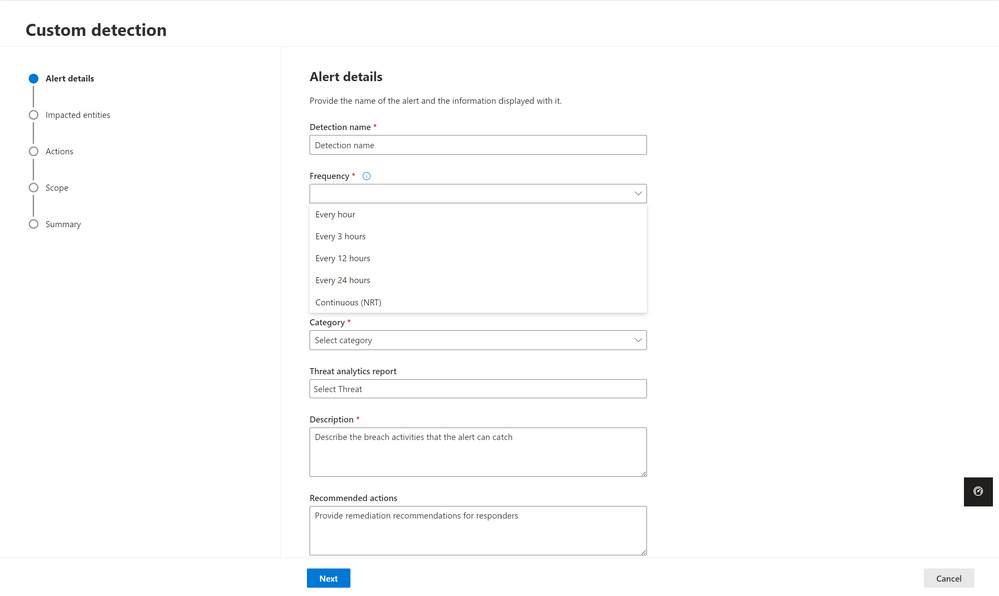
by Contributed | Mar 15, 2023 | Technology
This article is contributed. See the original author and article here.
Hello everyone, I’m Basel Kablawi, PM on the Azure Edge and Platform – Core Networking team, here to announce the latest updates to the physical network switch requirements!
Our ecosystem of physical switches is designed to help ensure the compatibility and reliability of network switches with Azure Stack HCI, Microsoft’s hyperconverged infrastructure solution. By participating in this program, vendors can validate that their physical switches meet the network requirements for rock-solid interoperability with Azure Stack HCI solutions.
In this blog, we’ll discuss how we’re reclassifying the physical network switches that meet the requirements of Azure Stack HCI to answer the following questions, such as:
- “Do I need a datacenter switch for every deployment architecture?”
- “Does my management and compute switch need storage capabilities?”
- “Are all 22H2 requirements needed for switchless configurations?”
- And other related questions…
One of the core benefits of this program is helping you have a seamless deployment and operational experience. This eliminates the risk of switch compatibility issues that increase deployment and troubleshooting times. You know that when you select a physical switch, Azure Stack HCI has everything it needs for the highest quality experience.
Our previous approach required all devices to support each network requirement, regardless of the type of traffic the switch was used for. We heard your feedback, and this led us to update how we think about physical switches connected to Azure Stack HCI nodes.
What are we changing?
As with the recent change we made to network adapters, physical switches will now be aligned based on the traffic type that they carry. This means more, low-cost and high-quality devices will be available for selection over time. The traffic types are as follows:
- Management traffic
- Compute traffic – This can be broken down into two categories:
- Standard virtual machine traffic
- SDN enabled virtual machine traffic
- Storage traffic
Here’s an example of the new structure which shows how the specific requirements map to a device carrying a certain type of network traffic:

For an updated mapping of the requirements, please see the documentation on our requirements page.
This change is intended to expand our switch ecosystem by adding more validated switches. With this new approach, there is no more “one size fits all”. You simply pick a switch that has the required capabilities for your specific role types.
If you are utilizing a switch that currently is not on the list, please contact your physical switch vendor.
With the changes to our switch program, you can use the new validation structure to identify the best switches for your intended workloads, configuration, and more.
As always, if you have feedback, please leave a comment in the chat below.
Thanks for reading!
Basel Kablawi

by Contributed | Mar 14, 2023 | Technology
This article is contributed. See the original author and article here.
 With the rapid advance of Generative AI, as demonstrated by Microsoft, understandably folks are excited! Generative AI has tremendous promise in workload reduction in content creation. For folks working on company Intranets, organizational knowledge management, and more, the need for help is great. Oftentimes these are teams that have part-time roles and are often understaffed.
With the rapid advance of Generative AI, as demonstrated by Microsoft, understandably folks are excited! Generative AI has tremendous promise in workload reduction in content creation. For folks working on company Intranets, organizational knowledge management, and more, the need for help is great. Oftentimes these are teams that have part-time roles and are often understaffed.
In this HLS Show Me How video I show how organizations can begin to leverage Microsoft Bing Generative AI with Microsoft Viva… today! Specifically, I show enhancing a Microsoft Viva Topics page with Generative AI content that can then be reviewed and edited. Although I show this action within Topics the same method is applicable in any aspect of Microsoft Viva, such as news in Connections, where content authoring is done.
*During the making of this video I show using the Developer Edition of Microsoft Edge. Literally as soon as I finished and went to post this using my production instance of the Microsoft Edge browser that edition was updated and now includes the Bing component with Generative AI!
Resources:
Thanks for visiting – Michael Gannotti LinkedIn | Twitter
 Michael Gannotti
Michael Gannotti

by Contributed | Mar 13, 2023 | Technology
This article is contributed. See the original author and article here.
Today we are excited to announce the public preview of near real-time custom detections in Microsoft 365 Defender. This new frequency will allow you to respond to threats faster with automated responses and gain valuable time in stopping attacks and protecting your organization.
Automation is key to keeping up with attackers
While Microsoft’s eXtended Detection and Response (XDR) solution helps prioritize response activities and provides a unified experience that allows for more effective investigation at the incident level, the increasing volume and speed of sophisticated attacks remains challenging.
That’s why automation is becoming an increasingly important tool in optimizing the SOC process. Automating response actions for common alerts can help you stay on top of threats, protect your organization more effectively, and reduce response times. If you want to get started in Microsoft 365 Defender, check out this post.
For effective protection, most organizations have custom detection mechanisms in place that are unique to the requirements of their environment, but in order for these automations to be as effective as possible, the speed of detection is critical.
Detect in near real-time, respond in near real-time
To address the need for faster detections and response, we are thrilled to announce that you can now create custom detection rules that run in near real-time, in addition to existing frequencies ranging from every 24 hours to every hour. These detections can be integrated with the broad set of Microsoft 365 Defender across email, endpoint, and identity, leading to faster response times and faster mitigation of threats.
This means your custom logic will run and evaluate all available signals and alerts faster than ever before and will trigger your predefined response action immediately, once a match is detected.
This new frequency will be available in Microsoft 365 Defender as Continuous (NRT). Image 1 shows the configuration wizard for custom detection rules in Microsoft 365 Defender and the various frequency options you can choose from, including near real-time (NRT).
 Image 1: Custom detection wizard with the frequency dropdown opened, new frequency of Continuous (NRT) is available.
Image 1: Custom detection wizard with the frequency dropdown opened, new frequency of Continuous (NRT) is available.
When you configure a rule using the Continuous (NRT) frequency, the query is compared to every single event that gets into the service, and if there is a match, an alert is triggered. You can use the continuous frequency for queries referencing one table and using operators from the list of supported KQL operators.
Top use cases for custom detections and automated response actions
Monitoring for recent vulnerabilities
A common use case for a near real-time custom detection rule that we see with customers is monitoring for events that might indicate threat activity related to a recently disclosed vulnerability. For instance, you can use the DeviceProcessEvents table to look for the malicious string needed to exploit the Log4j vulnerability and configure remediation actions to run automatically on targeted devices, like initiating investigation on the device:
DeviceProcessEvents
| where ProcessCommandLine matches regex @'(?i)${jndi:(ldap|http|https|ldaps|dns|rmi|iiop)://(${([a-z]){1,20}:([a-z]){1,20}})?(([a-zA-Z0-9]|-){2,100})?(.([a-zA-Z0-9]|-){2,100})?.([a-zA-Z0-9]|-){2,100}.([a-z0-9]){2,20}(/).*}'
or InitiatingProcessCommandLine matches regex @'(?i)${jndi:(ldap|http|https|ldaps|dns|rmi|iiop)://(${([a-z]){1,20}:([a-z]){1,20}})?(([a-zA-Z0-9]|-){2,100})?(.([a-zA-Z0-9]|-){2,100})?.([a-zA-Z0-9]|-){2,100}.([a-z0-9]){2,20}(/).*}'
Detect and remove unwanted emails
Another use case is to look for unwanted emails, that may not necessarily be malicious but have been defined by the organization as unwanted and need to be automatically removed as soon as they are delivered. This empowers security admins to more easily manage mail flows from a security lens and can be done by configuring a Soft Delete remediation action:
EmailEvents
| where Subject contains "This account has been suspended!"
| where SenderFromAddress == "malicious@sender.com"
| where UrlCount > 0
An example of another scenario is to look for messages that spoof the recipient from a particular IP subnet and blocking this activity.
EmailEvents
| where SenderIPv4 startswith "xx.xx.xx." and SenderFromAddress == RecipientEmailAddress
Automation is critical to creating efficiencies in your SOC, but the speed of detection is fundamental to an effective response and keeping your organization safe.
The ability to define custom rules for near real-time detections is in public preview starting today and will enable your defenders to create effective response mechanisms with the breadth of Microsoft 365 Defender’s XDR signal across endpoints, email and more.
Learn more
- Check out our documentation and explore how near real-time custom detections can enhance your SOC’s detection and response processes
- Wondering which tables are supported by near real-time detections? Find them here.
- Start automating your response actions today.
- Near real-time detections are available in public preview starting today. We would love to know what you think. Share your feedback with us in the Microsoft 365 Defender portal or by emailing AHfeedback@microsoft.com.

by Contributed | Mar 11, 2023 | Technology
This article is contributed. See the original author and article here.
How to Participate:

Step 1: Don’t miss this amazing opportunity, register for the Student Summit here
Step 2: Complete this Cloud Skill challenge here https://aka.ms/StudentSummitSouthAfrica
Step 3: Fill the Official Rul Form https://aka.ms/SSNGWPRules.
Microsoft Student Summit Watch Party South Africa
When: Wednesday, March 22, 2023, 9:30 AM – 2:00 PM (GMT+02:00)
Where: Johannesburg, Gauteng, South Africa
Microsoft Student Summit is an event designed for students and rising developers who are passionate about technology and eager to learn new skills and meet like-minded individuals. Attending the Microsoft Student Summit can provide students with a number of benefits, including:
Exposure to the Latest Technologies: The Microsoft Student Summit provides students with an opportunity to learn about and experience the latest Microsoft technologies, such as cloud computing and artificial intelligence.
Microsoft Learn: Microsoft Student Summit Cloud Skills Challenge are hands-on, allowing students to apply their knowledge and skills to real-world learning and challenges. This can be a valuable experience for students and rising developers who are looking to build their portfolios and demonstrate their abilities to future employers.
Career development: The Microsoft Student Summit can be a valuable resource for students who are interested in pursuing careers in technology. By attending the event, students can gain insights into the latest trends and innovations in the industry and connect with potential employers and recruiters.
Overall, the Microsoft Student Summit provides students and rising developers with a unique opportunity to learn and grow as individuals and technology professionals. Whether you are a beginner or an experienced technologist, the Microsoft Student Summit is a valuable investment in your future.
What is Student Summit?
Are you exploring a career in technology? Or looking to accelerate your technical career? Want to know what a “day in the life of” is really like before you dive in? Or get a jumpstart understanding the skills needed for success? Whether you are just starting your undergraduate degree or a seasoned professional curious about the tactical steps needed to accelerate your career, Microsoft Student Summit will help you discover how to gain expertise in today’s cutting-edge technology needed for your career.
What Will I Learn?
Tech
Discover the cutting edge of Application Development and Developer Tools, Low Code/ No-Code / Fusion Development, and AI, Data and Machine Learning and how to build your expertise start your learning journey with our Student Summit Cloud Skills Challenge.
Community
Tailored learning paths, upcoming networking events in your region, and invitations to join technical communities to help you deepen your technical expertise learn more at Microsoft Learn Student Hub.
Career
Career advice about how to start and accelerate your technical career from industry experts.
Additional Resources
Visit Microsoft Student Hub here: https://aka.ms/learnstudent

by Contributed | Mar 10, 2023 | Technology
This article is contributed. See the original author and article here.
Hello hello, everyone! Happy Friday!
Here’s a recap of what’s been going on in the MTC this week.
MTC Moments of the Week
To start things off, we want to first give a huge shoutout to this week’s MTC Member of the Week – @Kidd_Ip! Kidd is a MCT (Microsoft Certified Trainer) and full time IT pro who has made great contributions to a variety of Tech Community forums across Azure and M365. Way to go, Kidd!
Moving to events, on Wednesday, we had our first of two AMA’s. Azure Communication Services and Microsoft Teams joined forces for this event to talk about the possibilities of connecting Teams with the communication capabilities in Azure and the cool stuff we can build with it. A big thank you to our speakers @MilanKaur, @tchladek, and @dayshacarter for sharing your expertise!
Then on Thursday, we had our second AMA all about Windows Server – from upgrading older versions and the importance of regular updates, to the security features in the latest versions of Windows Server (2022). We received a lot of questions, which were answered by our panel of speakers from the Windows Servicing and Delivery team as well as Windows Server engineers and security product managers. Shout out to @Artem Pronichkin , @Rick Claus, @Scottmca, @Ned Pyle, @Rob Hindman, and the rest team for a great session!
And over on the Blogs, in honor of Women’s History Month, the Marketplace Community kicked off a series of interviews with women leaders in the ISV community. The first edition of this series features an interview between @justinroyal and Harmke Alkemade, AI Cloud Solution Architect at Microsoft and Co-Founder at Friendly Flows. We love to see it!
Upcoming Events – Mark Your Calendars!
———-
For this week’s fun fact…
Did you know that the concept of what we know today as “Spring Break” (in the US, at least) began in 1938, when a college swimming coach, Sam Ingram, brought his team down from New York to Fort Lauderdale, Florida in 1936 to train? When the word got around to other swim coaches, they followed suit, and it began an annual pilgrimage for swimmers from across the US to enjoy the sun – and have some fun. The more you know!
Have a great weekend, everyone, and don’t forget to spring forward on Sunday!



Recent Comments